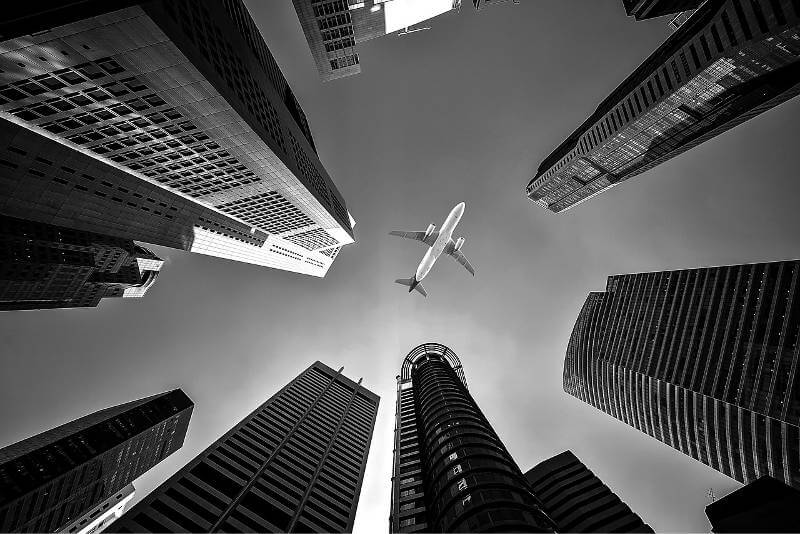People living near major airports may be experiencing poorer sleep quality due to night-time aircraft noise, according to a new study conducted by researchers at the University of Leicester. The research, which combined data from wearable activity monitors and self-reported sleep information, provides compelling evidence of the impact of aircraft noise on sleep patterns.
The study, published in Environmental Health Perspectives, analyzed data from over 80,000 individuals residing near four major airports in England: London Heathrow, London Gatwick, Manchester, and Birmingham. By using both objective measurements from wearable devices and subjective responses from questionnaires, the researchers were able to paint a comprehensive picture of how aircraft noise affects sleep.
Noise Levels and Sleep Disturbance
The study found that higher levels of night-time aircraft noise, defined as a night-time average of 55 decibels (dB) or more, were linked to increased movement during sleep and disrupted sleep-wake cycles. This suggests a significant association between night-time aircraft noise exposure and sleep disturbance.
Xiangpu Gong, the lead author and postdoctoral researcher at the University of Leicester, explained the significance of their approach: “We used information from both wearable devices that track movement during sleep and self-reported questionnaires to get a more comprehensive picture of sleep. The wearable devices provided objective data about how restful sleep was and the patterns of sleep, while questionnaires helped us understand how people felt about their sleep.”
The research team utilized noise maps created by the UK Civil Aviation Authority to estimate the aircraft noise exposure for each participant. They then compared the sleep patterns of those exposed to higher noise levels (55 dB or more) with those exposed to less than 45 dB, taking into account various factors that might affect sleep quality.
Long-term Health Implications
The findings of this study raise concerns about the potential long-term health effects of chronic sleep disturbance due to aircraft noise. Gong highlighted this issue, stating, “Poorer sleep patterns, as measured by actimetry, have been associated with higher risk of mental health problems, conditions like diabetes and obesity and with mortality risk.”
Professor Anna Hansell, who led the study, emphasized the unique aspects of their research: “This study is different because it is one of the largest on this topic and combined sleep data from wearable devices with self-reported sleep information. Most previous studies have relied on people’s self-reports about their sleep, which can sometimes be inaccurate due to poor recall.”
Policy Implications
The study’s findings come at a time when there is increasing pressure on airports to expand night flight operations. Professor Hansell expressed concern about this trend, stating, “It is of concern that current pressure on airports to increase night flights could result in more night-time aircraft noise from airplanes, with potential impacts on sleep disturbance and ultimately on health.”
These results underscore the need for policymakers to consider the health impacts of aircraft noise when making decisions about airport operations and urban planning. As cities continue to grow and air travel increases, finding a balance between economic interests and public health will be crucial.
Quiz
- What was the threshold for “higher levels” of night-time aircraft noise in the study?
- How many major airports were included in the study?
- What technology did researchers use to objectively measure sleep patterns?
Answer Key:
- 55 decibels (dB) or more
- Four (London Heathrow, London Gatwick, Manchester, and Birmingham)
- Wearable devices that tracked movement during sleep (actimetry)
Further Reading:
- World Health Organization guidelines on environmental noise: https://www.who.int/publications/i/item/9789241550376
- Effects of noise on sleep: https://www.ncbi.nlm.nih.gov/pmc/articles/PMC3988259/
- UK Civil Aviation Authority noise mapping: https://www.caa.co.uk/consumers/environment/noise/
Glossary of Terms:
- Actimetry: A method of measuring human rest/activity cycles using a wearable device.
- Decibel (dB): A unit used to measure the intensity of sound.
- Sleep-wake cycle: The natural pattern of sleep and wakefulness in humans over a 24-hour period.
- Biobank: A large collection of biological samples and health information used for research purposes.
- Environmental epidemiology: The study of environmental factors that affect the health of populations.
Enjoy this story? Get our newsletter! https://scienceblog.substack.com


